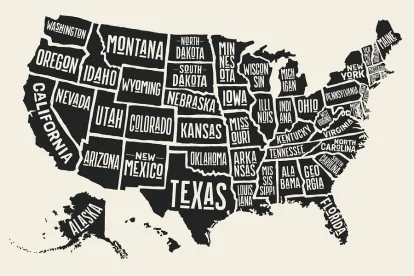Although the Washington State Department of Labor and Industries (L&I) has yet to finalize the new annual salary required for exempt status, it intends to propose a new salary basis test that would more than double the current federal salary threshold. This would increase the required annual salary for an exempt employee in Washington from $23,660 to between $56,160 and $70,200. This proposed salary requirement for exempt status is even more than what the Obama administration’s Department of Labor (DOL) finalized to take effect on December 1, 2016 ($47,476 per year), which a U.S. district court later struck down.
The salary basis changes will have the most immediate and significant impact on employers in Washington state. The proposed changes include increasing the salary requirement to 2 to 2.5 times the state’s minimum wage, and in some cases up to 3–4 times (for computer professionals) the state’s minimum wage. This would mean a potential increase to approximately $1,350 per week in salary compared to the current requirement of $455 per week.
In addition to the salary basis changes, L&I is currently in the rulemaking process to revise the state’s white-collar overtime exemptions, specifically the exemptions for executive, administrative, professional, outside sales, and computer-related employees, often referred to as the “EAP exemptions.”
Washington started this process, in part, to better align its laws with its counterpart, the Fair Labor Standards Act (FLSA), and the FLSA’s proposed 2016 changes. L&I presented the pre-draft version of the proposed rules on October 5, 2018; held listening sessions and received comments on that draft until October 26, 2018; and issued a second pre-draft version of the proposed rules. Implementation of the final regulations will likely occur sometime in 2019.
The primary changes to the duties test are less clear than those to the salary basis test. Much of the text and comments propose eliminating current Washington-specific duties basis requirements to align Washington’s exemptions with the FLSA’s exemptions. But the proposed changes also include many questions of stakeholders regarding whether the state should retain the Washington-specific criteria, which are, for the most part, more restrictive than the federal law.
It remains to be seen what the final result will be. Unlike what we saw with the DOL’s FLSA changes and the resulting legal challenges, it is likely that L&I’s proposed rules will ultimately be finalized in 2019, with a probable effective date of January 1, 2020.
In the meantime, Washington employers may want to review the EAP exemptions under the current law and consider the potential salary increases proposed by the new state law to determine the business and financial impacts of either increasing salaries or converting positions to nonexempt. Employers may also want to consider how converting employees with exempt status to nonexempt status could affect their businesses.
For more information on the rulemaking, visit L&I’s EAP exemption web page.




 />i
/>i

